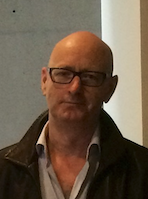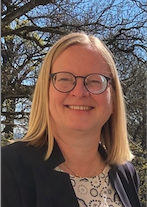Keynote speakers

Hans Malmström, Chalmers University of Technology, Sweden
““Books galore!” Balancing Academic Reading with Linguistic Demands in Swedish Higher Education”
Reports abound of Swedish students struggling with academic reading. Results from the Swedish Scholastic Aptitude Test have indicated a decline in Swedish reading comprehension among 18- to 20-year-olds, while their English reading comprehension appears to be improving (Löwenadler, J. (2023). Trends in Swedish and English reading comprehension ability among Swedish adolescents: A study of SweSAT data 2012–2018. Scandinavian Journal of Educational Research, 67(4), 591-606). Despite this, many undergraduate students in Sweden express concerns about their ability to manage academic reading, whether in Swedish or English, highlighting difficulties with comprehension and keeping up with the reading. Against this background of reported reading challenges, this talk will shine a light on assigned reading in Swedish higher education, highlighting (i) the amount of reading students’ are expected to do, (ii) the text types they are exposed to, (iii) the languages in which they are expected to read, as well as (iv) students’ views on assigned reading. Assigned academic reading is not a trivial parameter in higher education teaching and learning – it correlates strongly with students’ grades and their developing critical thinking. The studies presented are based on two primary sources of data; first, a survey with a representative sample of 1,000 students eliciting their views on academic reading; and second, a sample of reading lists collected from ≈ 2,500 undergraduate courses representing all major disciplines from across Swedish higher education institutions. The work is guided by the overarching objective of understanding the academic reading demands, in English, Swedish and other languages, placed on university students in Swedish higher education. The findings from this research (still under analysis) will contribute to improved understanding concerning the conditions for learning through academic reading in HE, starting a research informed dialogue on how to better support students in navigating their academic reading requirements.

Andrew Bennett, University of Bristol,UK
“Coscribbling and Corresponding: Keats’s Letters, Shakespeare’s Poems, and the Future of Literary Criticism”
In order to address the ‘crisis’ that John Guillory, Jonathan Kramnick and others have identified as confronting literary studies at the present time, I will propose that reading the personal correspondence of the English Romantic poet John Keats can help us to navigate a possible future for literary criticism. The act of reading a private or familial letter as a literary work brings to the fore fundamental questions concerning critical interpretation, evaluation, and understanding, and I therefore want to suggest that such an endeavour can be deployed in a consideration of the nature and purpose of literary study as such.
Since Keats’s letters are famous in part for their acts of critical and imaginative response, especially to William Shakespeare, we might ask whether moments from the letters can themselves be seen as exemplary of the practice of literary criticism, and of what it might become. In a letter of February 1818 to his friend and fellow-poet John Hamilton Reynolds, Keats signed himself off as ‘Yr sincere friend and Coscribbler John Keats’: building on the informal or contingent literary responses that we encounter in Keats’s letters, I will suggest that one way to configure criticism, and to think about its future as a discourse and discipline, is to reconfigure it as a form of correspondence or ‘co-scribbling’.

Hilde Hasselgård, University of Oslo, Norway
“English language and linguistics at university level in Scandinavia: what and why?”
Research and teaching within English language and linguistics in Scandinavia are facing a number of challenges. Some of these are familiar, for example defining what characterizes English linguistics as distinct from general linguistics, and whether our location in Scandinavia makes a difference for what we focus on in our teaching and research. More recent challenges, especially for teaching, include the increasingly globalized community and changes in student groups, who are massively exposed to English, linguistically and culturally diverse, and live their lives online. My own perspective is that of an applied corpus linguist focusing on contrastive analysis and learner corpus research. I will give some examples of how this perspective can be useful in both research and teaching. I will end by discussing some of the challenges outlined above as well as opportunities for English linguists in Scandinavia today and possibly in the future.
